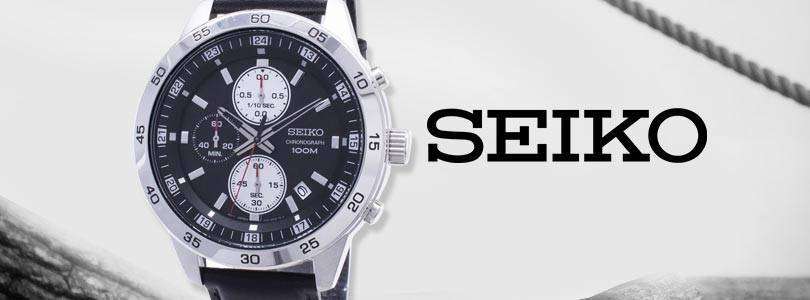Seiko
All about Seiko Chronograph Watches
Seiko chronographs! These are pieces that deserve your respect. Not just because they have pushed the limits with some but for still pushing them hard and trying to make things better every day.
Seiko, undoubtedly, represents watch making that thrills experts and aficionados alike, for they didn’t stop with the quartz chronograph watches; instead, they came up with the first mechanical chronograph in Japan that showed its position as a status symbol as much as a timing device for the 1964 Summer Olympics.
The hand-wound Caliber 5719 was a movement radically different from the Seiko chronographs we know about today. It had a single-button that triggered the chronograph. Inside, it has a horizontal coupling with a column wheel that controlled stopwatch functions – Start, stop and return-to-zero. There was no 3-eye counter for the chronograph but a rotating bezel calibrated to denote 1-minute increments. Its balance wheel beating at 5.5 hertz (39,600 vph) made the caliber 3719 one of the most exotic timekeeping mechanisms that you could ever own!
Or, think about the 6139 movement! Equipped with a central rotor coupled to the Magic Lever mechanism, this 1959 creation offered a 36-hour power reserve, even with the chronograph running all the way.
The next Seiko release was an upgrade to the 6139 automatic caliber – the 6138. It displayed seconds and hours and aesthetically, too, it was different. Its pushers were at the top instead of being at the sides. And slowly, Seiko progressed to create more exotic chronograph watches – the calibre 7016 (30 minutes counter), the calibre 7017 (ultra-thin automatic) and the calibre 7018 (now a 30-minute counter added separately) stand as witnesses. However, Seiko stopped producing these mechanical calibers in the 1980s and today, their best chronograph watches run on solar-driven quartz movements, kinetic and the Spring Drive, some of them being radio and GPS-controlled for better accuracy and reliability. However, if you want cheaper versions of the Seiko chronograph, you also get them in plain battery-driven quartz versions.
What was stopped in the 1980s made a comeback in 2009. This time, it was called the Ananta (means unending in Sanskrit). The automatic mechanical Ananta chronograph was given the calibre 8R28 with all traditional elements (column wheel, vertical clutch and Magic Lever) from the earlier Seiko chronographs and added with newer innovations; for example, the simultaneous return of the chrono-seconds hand to zero.
The 8R28 evolved to 8R39 within the next 5 years; however, earlier to the Ananta, came the Spring Drive, converting mechanical energy into electrical (like Kinetic) and magnetic energy. This too came equipped with column wheel and vertical clutch, but offered a superlative precision of +1 second a day, which surpassed the COSC standards and it still does; till date! This has been now reduced to +0.5 seconds a day now with the Spring Drive calibre 9R96, but you need to be really, really lucky to get you hands on one of these limited edition, specially tuned 400 pieces!


